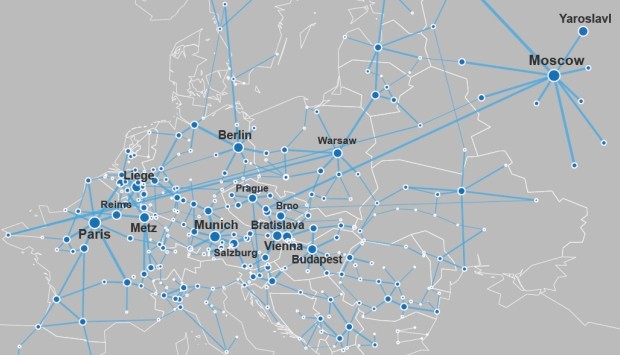Play all audios:
Networks, characterised by numerous connections and interactions permeate every field of research from social to biological and economical to technical. In an increasingly interconnected
world, an important challenge has been to unravel the architecture of complex, constantly developing networks. A multi-disciplinary international team of scientists, including some from
India, have now used tools from geometry to characterise the shape of real world networks1. The researchers have employed classical concepts of geometry to study how different ‘curvatures’
compare when put to test on robust networks such as European road network or biological networks. Curvature is a key mathematical concept, and the Ricci curvature – developed by Italian
mathematician Gregorio Ricci Curbastro around the turn of the 20th century – was an essential ingredient in Einstein's formulation of General Relativity and “a driving force in the
advancement of this science”, says lead author of the study Areejit Samal from the Institute of Mathematical Sciences (IMSc) in Chennai. "As part of ongoing work with the Max Planck
partner group in mathematical biology, we are developing curvature measures to characterise the geometry (or shape) of networks,” Samal told _Nature India_ . Along with German geometer
Jürgen Jost, Samal’s team has used geometrical concepts to study real social networks such as that of jazz musicians, e-mail communication between people and infrastructure networks such as
the US power grid, even biological ones like the yeast-protein interaction network. "We have analysed 17 real world networks from different domains... the architecture of real networks
deviates from model networks," Samal says. The structure of networks can be described using a graph that has a number of nodes and edges. Samal says it will become extremely important
in future to characterise the shape of networks employing such classical geometry concepts. Practically speaking, mathematicians can use underlying information on curvature of edges or
connections to identify bottlenecks or vulnerabilities to make these networks more robust. The sign and magnitude of the network curvature can also be used to predict the expansion of a
growing network, such as the world wide web, Samal explains. "In India, a natural test ground for our models could be the Indian financial market data," Samal says adding he is
discussing this prospect with a senior econophysicist at the Jawaharlal Nehru University in New Delhi.

